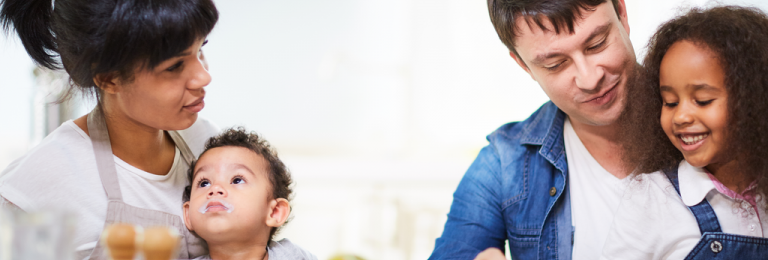Your Influence On Your Child’s Eating Behaviour
The meal-time experience for children can go from a walk in the park one day to an uphill battle the next day. A child’s attitude towards meal-time is determined by many factors and it is important to be aware of these in order to help children build a healthy relationship with food.
Learning about Division of Responsibility can help address these challenges.
Multiple factors can negatively influence a child’s eating behavior and include pressuring your child to eat, restricting food, managing food jags, using food as reward or comfort and being a poor role model.
Tip 1: Don’t pressure your child to eat
Pressuring children to eat causes them to ignore their internal hunger and fullness cues, decrease their ability to control their food intake, and may result in emotional eating. It is recommended that caregivers avoid pressuring children to consume a particular food, as this is not effective at increasing intake or preference for the food. Instead, always offer at least one food your child likes at every meal so that there is something that they can eat. Note that praising children for eating certain foods or bribing them to eat is also considered pressuring.
Tip 2: Don’t restrict food
Your children may eat more than what you might think is adequate for them. However the amount they consume is strongly associated with their energy needs for growth and development. Trust that children will eat the amount they need. Putting limits on their food consumption can have negative impacts on their development of a healthy and life-long relationship towards food and a positive body image.
Tip 3: Accept food jags as normal
A food jag is when a child wants to eat a specific food over time and rejects other foods. This is a very common behaviour in children and is often described as being picky. During this period, it is important not to pressure or argue with a child to eat certain foods because this could increase pickiness. You can offer a variety of familiar and well-liked nutritious foods alongside new ones for them to try. Sometimes it can take up to 15 exposures before they choose to eat it.
Tip 4: Don’t use food as a reward
Try out our Non-Food Rewards instead.
Tip 5: Be a role model
Parents and older siblings can positively influence their child’s eating habits by being a good role model. Family members set an example for what children will eat, so it is important to incorporate a variety of healthy foods from the Canada’s Food Guide, including vegetables, fruits, whole grains, legumes, dairy, fish, eggs and lean meats.
Try to limit foods high in fat, sugar and salt such as fried foods, potato chips, soda, desserts, and candy. When you limit these foods yourself, your children will also be less likely to eat them.
For more ideas and resources:
Parent and Caregivers Influence on Children's Eating Habits
Content provided by 3rd year UBC Dietetic Students, Behnaz Sadri and Anna Wasniak
